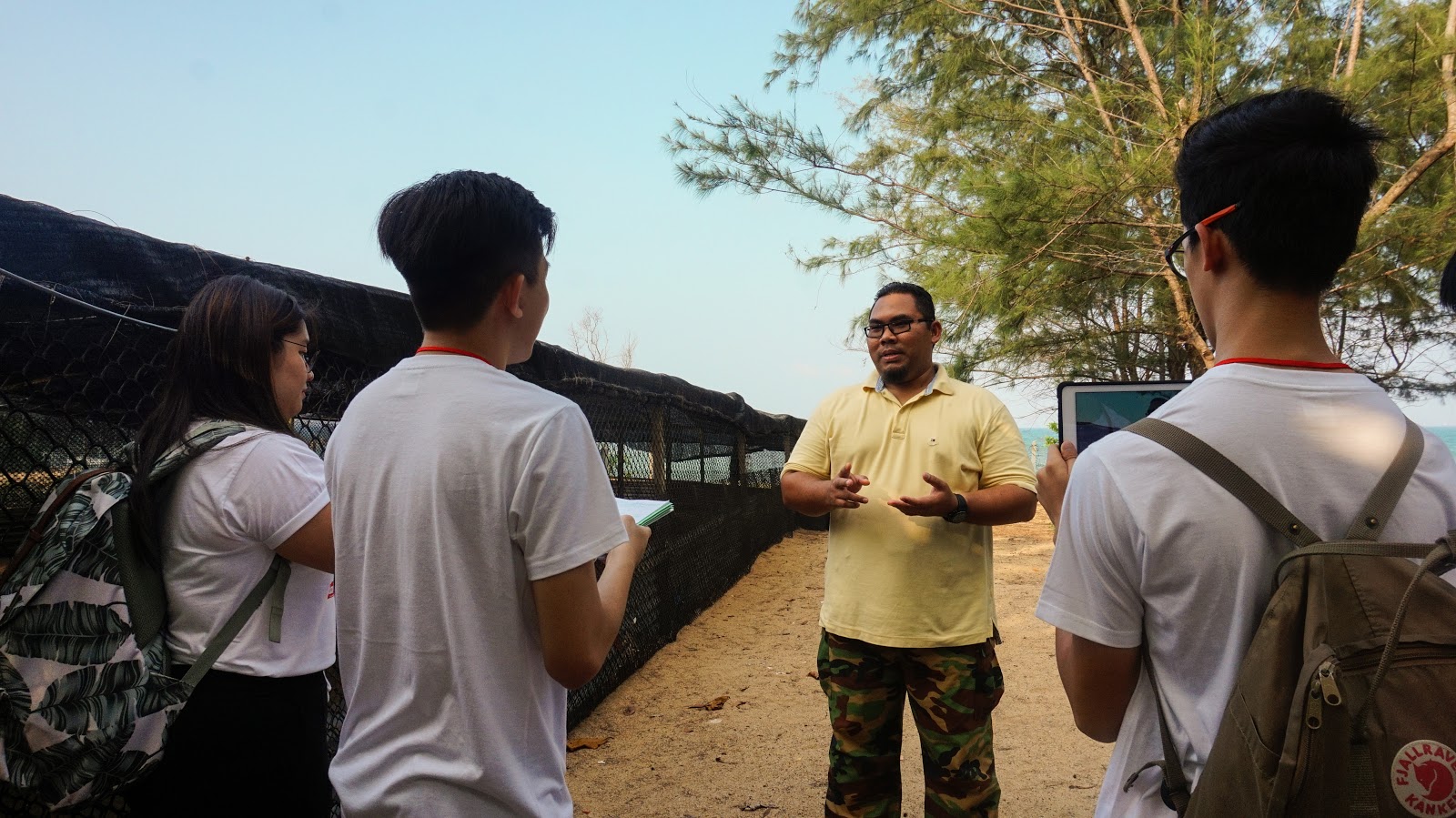by TEAM SATPAL
The threat of extinction is no breaking news to the turtles dwelling in our oceans. Take the Pacific leatherback for example, as few as 2,300 adult females remain today, according to recent World Wildlife Fund (WWF) statistics.
As we venture into the 21st century, the sad truth is that new and different challenges have been introduced to the people involved in the conservation of this species.
Mohammad Firdaus bin Abdillah, 33, head of the Rantau Abang Turtle Conservation and Information Centre, said that, every year, approximately four thousand turtle nests are placed under the care of the state of Terengganu. The Ma’Daerah Turtle Sanctuary, located in Kerteh, Terengganu, is one of the 14 Terengganu turtle sanctuaries selected by the government to fulfill the mission of turtle protection.
Recently, according to Mohd. Firdaus, the sanctuary is facing one of its biggest challenges yet — global warming.
According to research, if the temperature of the nests exceed 29.5°C, there is a higher likelihood for turtle eggs to hatch into females, said Mohd. Firdaus. He fears, “what might eventually happen is that there might be a shortage of male turtles, and so the turtles may not be able to reproduce.” If this happens, this will worsen the endangerment of the turtle species.
Rising temperatures hinder the development of the embryo. This was the case in 2010, as Firdaus mentioned, during that year, a total of 492 leatherback turtle eggs in the Ma’Daerah Turtle Sanctuary were unable to hatch.
Mohd. Firdaus added that pollution of plastic is another obstacle the sanctuary has to deal with. With growing industrialisation in the state comes increasing use of plastic. Estimates by the US Academy of Science show that there are more than 46,000 pieces of plastic waste per square mile on the ocean today. As humans or companies dump their plastic waste, such as straws, bottles, or plastic bags, into the oceans, turtles often mistaken these materials as jellyfish, which is an essential part of their diet, thus causing indigestion and in most cases, death.
Turtles also face the threats of poachers from outside our nation’s borders. With contemporary marine technology, it has become easier than ever for people of foreign countries to enter our waters to partake in illegal activities, such as turtle poaching.
Mohd. Firdaus said, “it is extremely difficult for us to bring them in, as they are from overseas. Typically [these poachers] are from Vietnam or the Philippines, they capture the turtles and eat them.”

Turtles have a place in the hearts of the people of Terengganu – photos of turtle can be seen behind vehicles and at the back of currency notes.
While venturing into the 21st century has brought about newer dangers to the turtle species, present-day breakthroughs in technology have helped conservation rangers in the battle to save the turtles.
According to Mohd. Firdaus, one innovative piece of technology that was recently incorporated by the Ma’Dearah Turtle Sanctuary is the turtle excluder device (TED). This device allows a captured turtle to escape if caught in a fisherman’s net, by allowing all any bycatch larger than 10 centimeters to escape the nets unharmed. This is achieved through the metal grids that are integrated into the net structure. The grids act as a barrier for large creatures such as turtles from passing through the bars into the back of the net. Targeted species such as fish however, are pushed to the back of the net. “When [fishermen] drive their motorboats at sea, the turtle excluder devices installed on the turtles help prevent them from being caught in their nets,” explained Firdaus.
Aside from that, satellite transmitters are now being installed onto the turtles, to allow the sanctuary to track their movements no matter which corner of the Earth they are.
In light of these modern challenges, Mohd. Firdaus emphasised the role that turtles play both on land and at sea.
“Humans do not always see the roles that turtles perform at sea”, Firdaus said. Wild turtles eat coral, and this prevents the coral from overgrowing. Hence, turtles are essential in keeping the marine ecosystem stable.
“On land, turtles are important because they are the state symbols of Terengganu. We always see stickers of them at the back of vehicles, on lamps, or even behind the RM20 note,” he added.
As turtles are cherished by the people of Terengganu, Mohd. Firdaus explained that all citizens have a role in the fight to save this state treasure. In accordance with Schedule Nine of the Constitution of Malaysia, turtles are listed as the possession of each state, thus the turtles of Terengganu are placed under the power of the state of Terengganu itself.
“When we carry out conservation practices, we involve the villagers and pay them. We now have at least 45 staff members who were originally villagers working near the coastline,” he said. Moreover, Firdaus added that they also host awareness programmes, where they would invite villagers to attend, to provide them with the awareness and knowledge of turtle conservation.
Mohd. Firdaus wished that people would at least fulfill their basic civic duties by not poaching turtles, not eating their eggs, not destroying their habitats, and not throwing waste materials into the oceans. As Firdaus gave a pause for thought, he expressed his hopes for generations to come, saying “I hope future generations will come to appreciate the importance of turtles, despite the negligent behaviours of their predecessors.”

